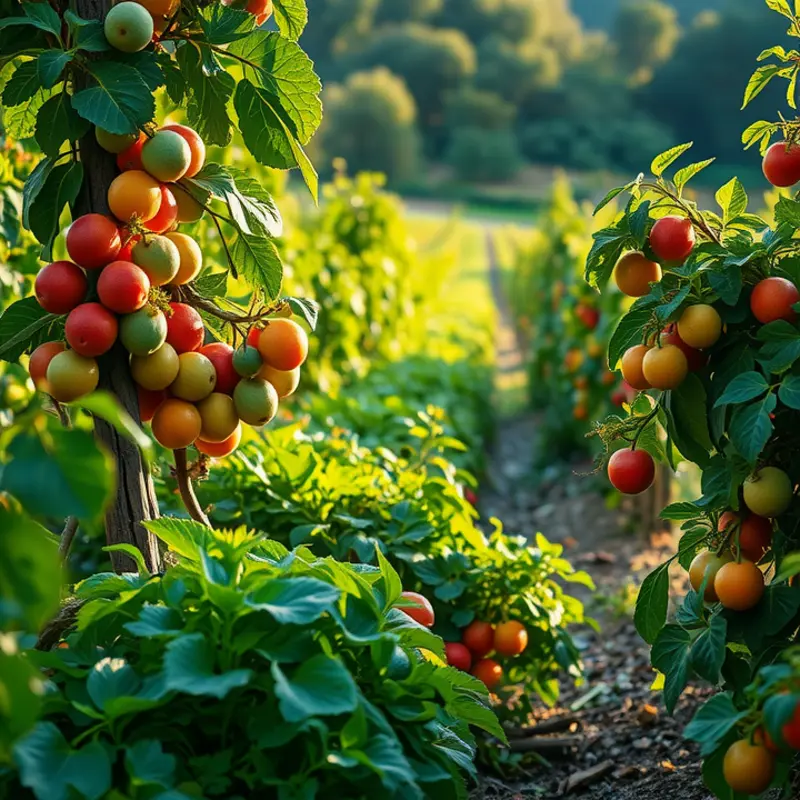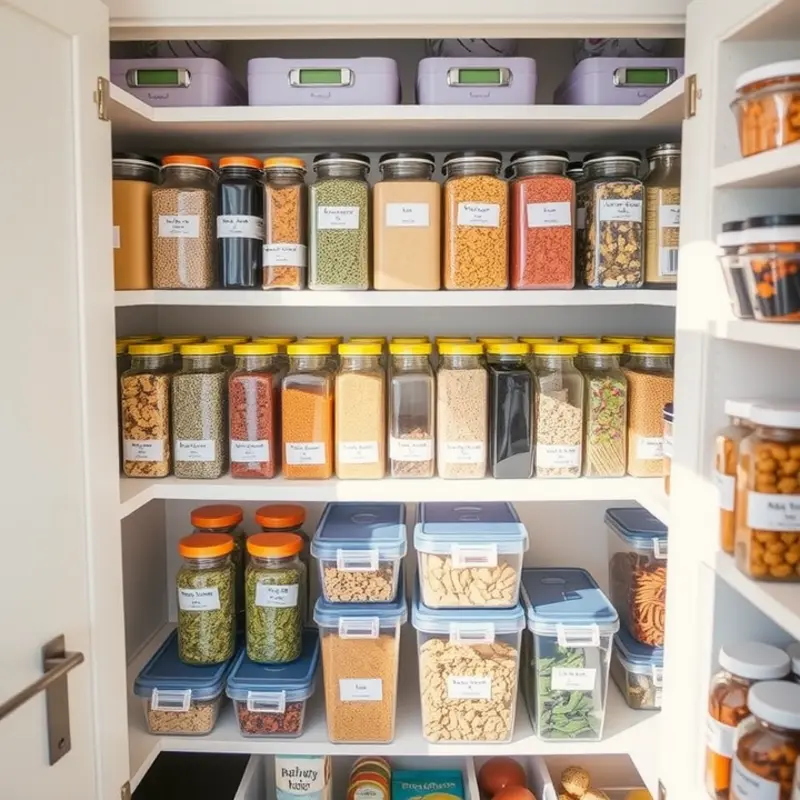Keeping food fresh longer not only enhances your meals but also helps minimize waste and save money. Understanding how to store different types of food, from fruits and vegetables to dairy and meats, is essential for effective food management at home. With a few simple techniques, you can significantly extend the lifespan of your groceries while ensuring safety and quality. This guide will provide actionable tips to revolutionize your kitchen experience.
Understanding Food Storage Basics

To maximize food freshness and reduce waste, understanding the fundamentals of food storage is essential. Different food types require distinct approaches when it comes to storage, involving factors like temperature, humidity, and packaging. Let’s explore efficient methods to keep fruits, vegetables, meats, and dairy products fresher for longer.
Fruits and Vegetables:
Fruits and vegetables have varying storage needs. Some, like apples and pears, are best stored in a refrigerator’s crisper drawer to maintain a controlled humidity level. On the other hand, bananas and tomatoes prefer room temperature for optimal ripeness. Leafy greens thrive in slightly humid conditions. Consider wrapping them in a damp cloth and placing them in a breathable bag to prevent wilting.
Meats:
Proper storage of meat is crucial for safety and freshness. Always refrigerate raw meat in its original packaging until ready to use. For longer storage, freezing is an effective method. Before freezing, wrap the meat in an airtight material to prevent freezer burn, ideally using freezer paper or vacuum-sealed bags. Date labels on packages help track freshness and ensure usage before expiration.
Dairy Products:
Dairy products are sensitive to temperature changes. Keep them in the fridge’s main body where the temperature is most consistent. Items like milk, cheese, and yogurt spoil easily if stored on the door due to frequent fluctuations. Cheese can be wrapped in wax paper and then placed in a plastic bag, providing a balance of ventilation and protection.
Temperature and Packaging:
Utilizing correct temperatures is vital across all food types. The fridge should be set between 37°F and 40°F (3°C to 4°C), and the freezer at 0°F (-18°C). Understanding the ideal temperature aids in slowing bacterial growth and prolonging freshness. Packaging techniques also play an important role. Airtight containers and resealable bags prevent moisture and air exposure.
Humidity:
Humidity can make or break food storage outcomes. Fruits and vegetables need particular attention here. Most refrigerators have adjustable humidity settings in the crisper drawers. A higher humidity level works well for leafy greens, while lower humidity is ideal for fruits like apples, which need air circulation to avoid over-ripening and decay.
Incorporating these strategies into your food storage routine not only helps to maintain the quality of your foods but also ensures that you align with your food preservation goals. For additional insights into maintaining diet-related freshness, check out this Mediterranean Chickpea Salad for a burst of sustainable fresh flavors.
Smart Storage Techniques

When it comes to food storage, understanding the principles of organization and preservation is key to maximizing freshness. One of the most effective strategies is the use of airtight containers. By minimizing air exposure, these containers help reduce oxidation and moisture loss, preventing spoilage and keeping your food fresh longer.
For optimal organization in your refrigerator, designate specific zones for different types of food. The top shelves are warmer, making them ideal for storing ready-to-eat foods. The middle shelves maintain consistent temperatures, perfect for dairy items. Utilize the lower shelves for raw ingredients because they tend to be colder. Also, keep fruits and vegetables in their designated crisper drawers, adjusting the humidity settings to suit the produce type.
Herbs can be particularly challenging to keep fresh. For parsley, cilantro, and other leafy herbs, trim the ends and place them in a jar of water, covering loosely with a plastic bag. Store in the refrigerator to extend their shelf life. Basil, on the other hand, should be treated like flowers. Keep it in a jar of water on your countertop, away from direct sunlight.
Freezing is another excellent method for extending the life of your food, but it requires careful preparation. Portioning food before freezing can save both space and time later on. Ensure that foods are cooled before placing them in the freezer to prevent raising the internal temperature. For higher efficiency, try freezing items flat in resealable bags; once they are frozen, you can stack them or file them vertically to maximize space.
When freezing liquids such as soups or sauces, consider leaving about an inch of space at the top of the container. This allows for expansion and prevents potential lid-path issues. Also, label all frozen items with the date and type of food to ensure you use them within recommended timeframes, reducing unnecessary waste.
Implementing these smart storage techniques can make a significant difference in maintaining the quality and longevity of your groceries, reducing trips to the store and keeping your meals as fresh as possible. For recipes that benefit from fresh ingredients, try incorporating your stored foods into meals, like this delicious Mediterranean Chickpea Salad. Each step not only preserves flavor but also contributes to a more sustainable kitchen environment.
Final words
By understanding food storage basics and implementing smart storage techniques, you can significantly extend the life of your ingredients while minimizing waste. These simple yet effective strategies will not only keep your food fresh but also contribute to a more efficient kitchen. Remember that the right environment is key to maintaining the quality of your food. With these tips, you’ll be equipped to manage your groceries better, save money, and enjoy fresher meals.







